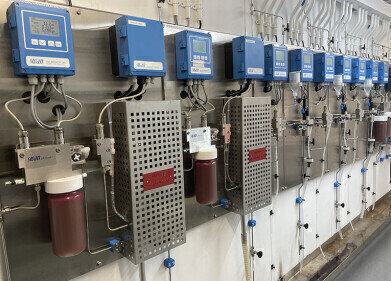Water Quality Monitoring
Asbestos in drinking water: where does it come from and how toxic is it?
Jan 31 2024
Asbestos in drinking water is a subject of concern due to its potential health risks. Asbestos, a naturally occurring fiber, was historically used in various products for its strength and fire-resistant properties. It can be found in asbestos-cement pipes used in water distribution systems, particularly those installed between the 1940s and 1970s. With these pipes aging, there's a risk of asbestos fibers being released into the drinking water supply. Additionally, asbestos can enter water sources from environmental sources like mining tailings, contaminated household wastes, and naturally occurring asbestos deposits. Events like landslides or natural disasters can also contribute to the contamination of water supplies with asbestos.
The health risks of ingesting asbestos through drinking water have been a subject of debate. According to Health Canada and the World Health Organization (WHO), there is no consistent and convincing evidence that asbestos ingested through drinking water is harmful to human health. The WHO also notes that most of the U.S. population consumes drinking water containing asbestos at concentrations below 1 MFL (million fibers per liter), which is believed to be safe. However, asbestos is known to pose risks when inhaled or ingested, being associated with diseases like mesothelioma, lung cancer, and asbestosis.
The Environmental Protection Agency (EPA) under the Safe Drinking Water Act has set a maximum contaminant level for asbestos in drinking water at 7 million fibers per liter. This limit is based on the best available science to prevent health issues. Water treatment processes, including coagulation, sedimentation, filtration, and disinfection, are typically effective in removing asbestos fibers from water. Advanced methods like reverse osmosis and granular media filtration can remove up to 99.99% of asbestos fibers.
For individuals concerned about asbestos in their drinking water, home water filtration systems can provide an additional layer of safety. In the event of potential contamination from natural disasters or damaged infrastructure, local health officials might advise precautions like using bottled water.
As many of the asbestos-cement pipes reach the end of their lifespan, the risk of asbestos contamination in drinking water may increase. Continued monitoring and replacement of aging infrastructure, along with advancements in water treatment technologies, are essential for ensuring the safety of drinking water supplies.
In conclusion, while there is no conclusive evidence linking asbestos in drinking water to health risks, the potential for harm, especially in areas with aging infrastructure, warrants attention and preventive measures. Continuous research and updates in regulations and water treatment technologies are crucial in managing this issue.
Digital Edition
AET 28.2 April/May 2024
May 2024
Business News - Teledyne Marine expands with the acquisition of Valeport - Signal partners with gas analysis experts in Korea Air Monitoring - Continuous Fine Particulate Emission Monitor...
View all digital editions
Events
Jul 30 2024 Jakarta, Indonesia
China Energy Summit & Exhibition
Jul 31 2024 Beijing, China
2024 Beijing International Coal & Mining Exhibition
Aug 07 2024 Beijing, China
IWA World Water Congress & Exhibition
Aug 11 2024 Toronto, Canada
Aug 25 2024 Stockholm, Sweden and online









.jpg)








